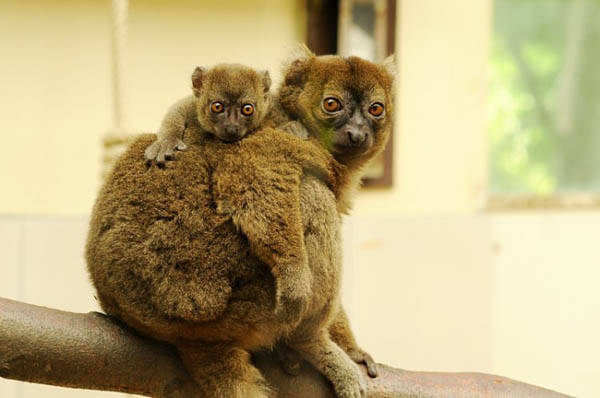Prolemur simus
IUCN
LCBasic Information
Scientific classification
- name:Prolemur simus
- Scientific Name:Prolemur simus,Greater Bamboo Lemur
- Outline:Primates
- Family:Lemuridae G.B.lemur
Vital signs
- length:40-68cm
- Weight:2.2-2.5kg
- lifetime:No verification information
Feature
The largest bamboo lemur
Distribution and Habitat
The greater bamboo lemur is found only in the rainforests of eastern Madagascar.
Appearance
The Greater Bamboo Lemur is the largest bamboo lemur. The head-body length is 40-68 cm, the tail length is 45-77 cm, and the weight is 2.2-2.5 kg. The rounded body is covered with olive-brown fur, with gray, brown and tan coloration on the underparts and tail. In addition to its larger body than other lemurs, the Greater Bamboo Lemur can also be identified by its prominent light gray or white ear tufts. However, some individuals of this species have been found with a significantly different dark golden red fur and no ear tufts. The Greater Bamboo Lemur has a more rounded appearance on its face compared to other family members due to its less prominent snout. They have a relatively long tail and long hind legs, and they jump vertically between the trees in their forest habitat.
Details
Greater Bamboo Lemur (scientific name: Prolemur simus) is a monotypic species of the genus Prolemur, with only about 140 individuals remaining.

Greater Bamboo Lemur specializes in eating bamboo, a feature that is extremely unusual among mammals. Almost 98% of the diet is provided by this low-energy food, especially giant bamboo (Cephalostachium viguieri). These lemurs prefer the inner pith of plants. They live alone or in family groups. They hibernate for as little as 3 days or for several weeks. The gestation period is 120-150 days, and the offspring are born from September to November, with one offspring per litter. They reach sexual maturity at 18 months.
Listed in the 2013 Red List of Endangered Species of the World Conservation Union (IUCN) ver 3.1 - Critically Endangered (CR).
Protect wildlife and eliminate game.
Maintaining ecological balance is everyone's responsibility!








